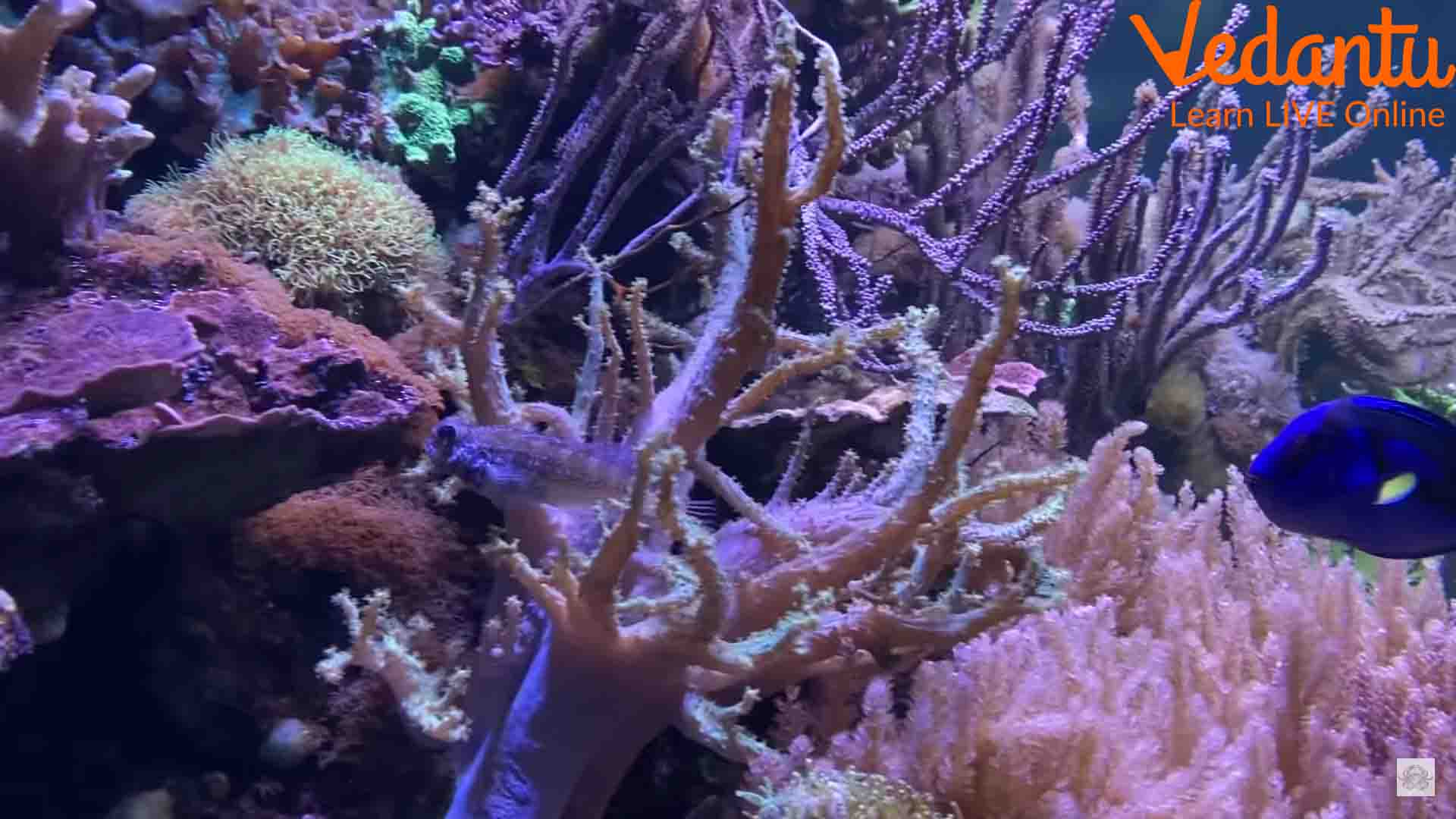The Underwater Marine Life You Should Know
Our blue planet looks marvellous from outer space. More than 70% of it is covered by the oceans and seas. This blue planet is the house of so many underwater species of plants and animals. This marine life is quite mysterious as we have only navigated less than 20% of it. You will be surprised to know that the oceans keep the earth’s climate inhabitable.
What lives in this marine biome? What are the underwater plants and animals? This is a question that intrigues the mind of ocean lovers like us. We know what plants and animals dwell in the lower depths of the marine habitat. Let us make a quick list to follow.
List of Underwater Marine Life
Here is a list of common marine plant and animal species you will find in the shallow depths of the oceans.
Sea Whip
As the name suggests, Sea Whip is a rooted soft coral with a length ranging up to 3 feet from the ocean floor. They are soft corals without a calcium carbonate coating outside. These whips are made of polyps which are smaller structures with tentacles. They feed on planktons.
Sea Anemone
Sea Anemones are colourful rooted animals that can be found waving their tentacles with the sea waves. These tentacles can sting and insert venom to the animals coming closer. Only one animal can be seen hiding in them, which is the clownfish. Clownfish and sea anemones are symbiotic in nature. Sea anemones are safer habitats that keep the predators of clownfish away. On the other hand, clownfish exchange nutrients with sea anemones. This is a very common symbiotic relationship between underwater sea animals.
Kelp
One of the most important plants in a marine ecosystem is kelp. They grow so fast that they can form an underwater forest within months. Kelp can be considered the weed of the sea. They can grow up to 100 feet on average and are dark green or brown in colour.
This sea plant has been around us for 23 million years. Prehistoric evidence suggests that kelp has been used by humans during the Middle Stone Age. It is now being used for various commercial purposes such as yielding methane, making toothpaste, salad dressings, cakes, and pharmaceutical products.

Beautiful Corals in an Aquarium
Glowing Corals
You will be surprised to know that these coral species glow in the dark. This is a brilliant example of bioluminescence. These corals live deeper than shallow water corals. In fact, the reason behind glowing up is to catch as much sunlight as they can. They live in a symbiotic relationship with a tiny algae called zooxanthellae. In this way, the corals can gain from the photosynthetic results of this alga. It is a perfect example of an animal living in water using a plant for photosynthesis.
Acropora Coral
One of the rarest coral species, Acropora exists in different purple shades. Its beautiful colour ornaments the ocean ecosystem. In fact, these corals also make the reefs stronger and support a huge ecosystem at the micro and macro level. Its colour varies from deep purple to light lavender giving a variety of shades to admire.
Scroll Algae
This alga is unique in every sense. It grows to form a community of algae and takes a curly shape. This alga looks like spiral flowers blooming from the ocean floor. They are also called potato algae. They can be found in the low tide lines and can survive with good sunlight. In fact, this type of algae can be used for aquarium decoration as it can survive in freshwater habitats.
Green Anemone
Sea anemones get their names from the anemones, a common flowering plant. These land flowers are pretty and have beautiful colours to display. Similarly, the green giant anemone forms another beautiful variety of underwater flowers. It has a fluorescent green colour and is pretty rare.
The colour is achieved from a photosynthetic organism living with it symbiotically. This sea anemone species resembles the Anastasia flower and can be mostly found in coral reefs and rock crevices.
This is a list of marine animals and underwater plants with names. Freshwater plants and animals vary from marine ones in terms of habitat, evolutionary features, etc. The deeper we go into the oceans, the fewer plants and animals we will find.
Amazing Facts About Oceans and Seas
Now that we have read about the plants and animals found in the marine ecosystem, let us list some facts about oceans and seas.
More than 94% of the earth’s wildlife comprises marine life.
The oceans and seas produce more than 70% of the oxygen for the whole planet.
The sun makes the vast oceans and seas blue. This is why our planet appears to be blue from outer space.
The deepest point recorded is in the Pacific Ocean. It is called the Mariana Trench. It is 11,034 metres, enough to drown Mount Everest. The pressure of the sea at the lowest point is 8 tons/ sq. inch. It is enough to crush us.
After learning various aquatic animals examples, you will be surprised to know that corals produce their own sunscreen called coral fluoresce to protect the algae found in the polyps.
The largest underwater mountain range called the Mid Oceanic Ridge is around 65,000 km long.
The Great Barrier Reef is visible from the moon. It is made of corals.
Conclusion
The only difference between sea and ocean is their size. Seas are smaller than oceans. Seas are more enclosed by land than oceans. Apart from these differences, the discussed marine animals and plants are found in both oceans and seas. The diversity of the deep marine ecosystem is yet to be unravelled in its entirety. We do not have the proper technology to map the deep oceans and seas yet.







